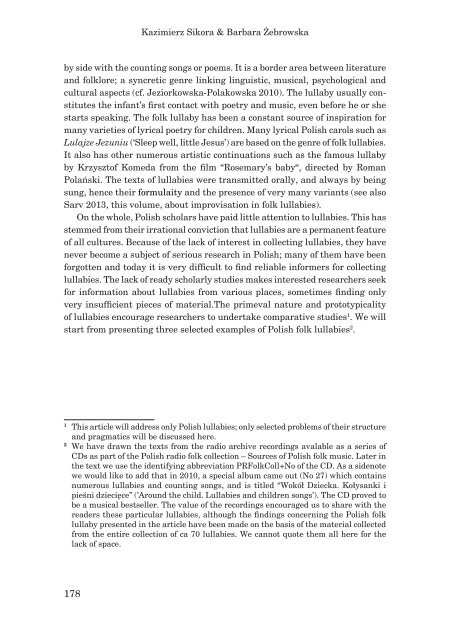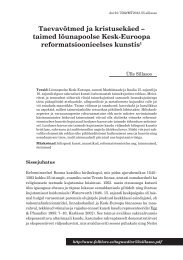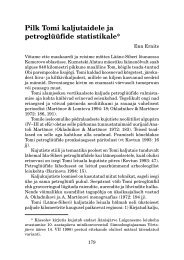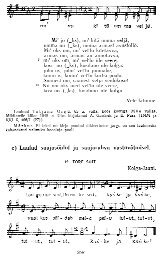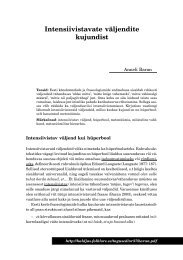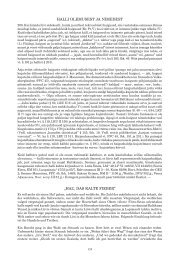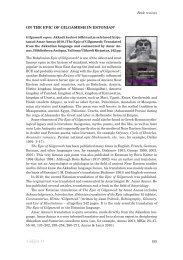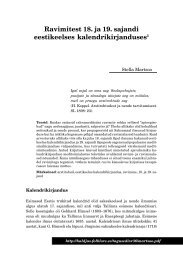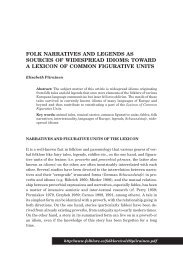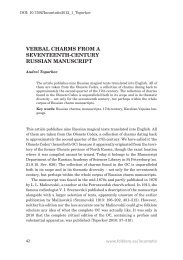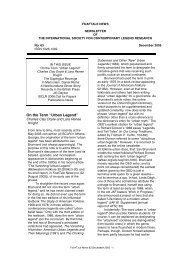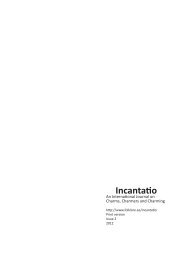You also want an ePaper? Increase the reach of your titles
YUMPU automatically turns print PDFs into web optimized ePapers that Google loves.
Kazimierz Sikora & Barbara Żebrowska<br />
by side with the counting songs or poems. It is a border area between literature<br />
and folklore; a syncretic genre linking linguistic, musical, psychological and<br />
cultural aspects (cf. Jeziorkowska-Polakowska 2010). The lullaby usually constitutes<br />
the infant’s first contact with poetry and music, even before he or she<br />
starts speaking. The folk lullaby has been a constant source of inspiration for<br />
many varieties of lyrical poetry for children. Many lyrical <strong>Polish</strong> carols such as<br />
Lulajze Jezuniu (‘Sleep well, little Jesus’) are based on the genre of folk <strong>lullabies</strong>.<br />
It also has other numerous artistic continuations such as the famous lullaby<br />
by Krzysztof Komeda from the film “Rosemary’s baby“, directed by Roman<br />
Polański. The texts of <strong>lullabies</strong> were transmitted orally, and always by being<br />
sung, hence their formulaity and the presence of very many variants (see also<br />
Sarv 2013, this volume, about improvisation in folk <strong>lullabies</strong>).<br />
On the whole, <strong>Polish</strong> scholars have paid little attention to <strong>lullabies</strong>. This has<br />
stemmed from their irrational conviction that <strong>lullabies</strong> are a permanent feature<br />
of all cultures. Because of the lack of interest in collecting <strong>lullabies</strong>, they have<br />
never become a subject of serious research in <strong>Polish</strong>; many of them have been<br />
forgotten and today it is very difficult to find reliable informers for collecting<br />
<strong>lullabies</strong>. The lack of ready scholarly studies makes interested researchers seek<br />
for information about <strong>lullabies</strong> from various places, sometimes finding only<br />
very insufficient pieces of material.The primeval nature and prototypicality<br />
of <strong>lullabies</strong> encourage researchers to undertake comparative studies 1 . We will<br />
start from presenting three selected examples of <strong>Polish</strong> folk <strong>lullabies</strong> 2 .<br />
1<br />
This article will address only <strong>Polish</strong> <strong>lullabies</strong>; only selected problems of their structure<br />
and pragmatics will be discussed here.<br />
2<br />
We have drawn the texts from the radio archive recordings avalable as a series of<br />
CDs as part of the <strong>Polish</strong> radio folk collection – Sources of <strong>Polish</strong> folk music. Later in<br />
the text we use the identifying abbreviation PRFolkColl+No of the CD. As a sidenote<br />
we would like to add that in 2010, a special album came out (No 27) which contains<br />
numerous <strong>lullabies</strong> and counting songs, and is titled “Wokół Dziecka. Kołysanki i<br />
pieśni dziecięce” (’Around the child. Lullabies and children songs’). The CD proved to<br />
be a musical bestseller. The value of the recordings encouraged us to share with the<br />
readers these particular <strong>lullabies</strong>, although the findings concerning the <strong>Polish</strong> folk<br />
lullaby presented in the article have been made on the basis of the material collected<br />
from the entire collection of ca 70 <strong>lullabies</strong>. We cannot quote them all here for the<br />
lack of space.<br />
178


